Planting and caring for honeysuckle in the Moscow region
Summer residents in central Russia are showing increasing interest in edible honeysuckle - an unpretentious shrub that begins to bear fruit in early June. Its berries have medicinal properties and are used in folk medicine and cooking. The plant itself has decorative properties; it is planted along fences and hedges, and used for zoning areas. Let's talk about planting and caring for honeysuckle in the spring in the Moscow region.
Planting honeysuckle in the Moscow region
Useful properties, decorative qualities, unpretentiousness in growing, frost resistance are increasingly attracting the attention of gardeners in the Moscow region to honeysuckle.
The best varieties of honeysuckle for the Moscow region
Breeders bred varieties, adapted to cool and humid climatic conditions, which are not afraid of cold winters near Moscow and unexpected return frosts.
Titmouse
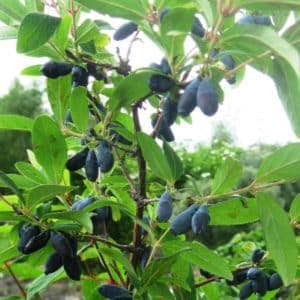
A vigorous variety, can reach 2 m in height, prefers sunny areas, and requires regular watering. The fruits are sweet, without any bitterness, with a pleasant aroma, reach a size of more than 2.5 cm, and do not fall off during ripening.
Chosen One
It grows in height no more than 1 m, the crown is rounded and thickened. The fruits are about 2 cm long, sweet and fragrant. The variety is late-ripening, but high-yielding - up to 3 kg of fruits are harvested from one bush. When ripe, the berries do not fall off.
Nymph
A mid-early variety, not tall, but with a voluminous lush crown.Perfectly suitable for cultivation in the Moscow region. Frost-resistant, unpretentious, bears fruit for up to 25 years. The berries are bluish-blue, large, without bitterness.
Bakchar giant
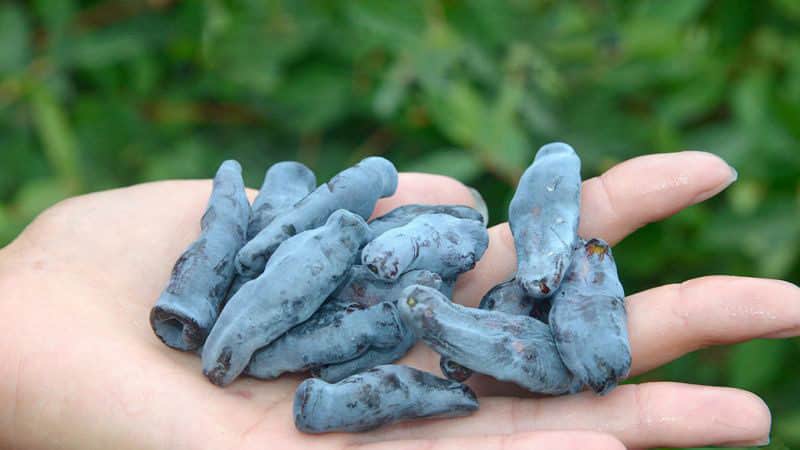
The variety is mid-season, large-fruited, the berries are large, up to 5 cm in length, and have a sweet taste with a slight sourness. With good care, the yield reaches 4.5 kg per bush.
Cinderella
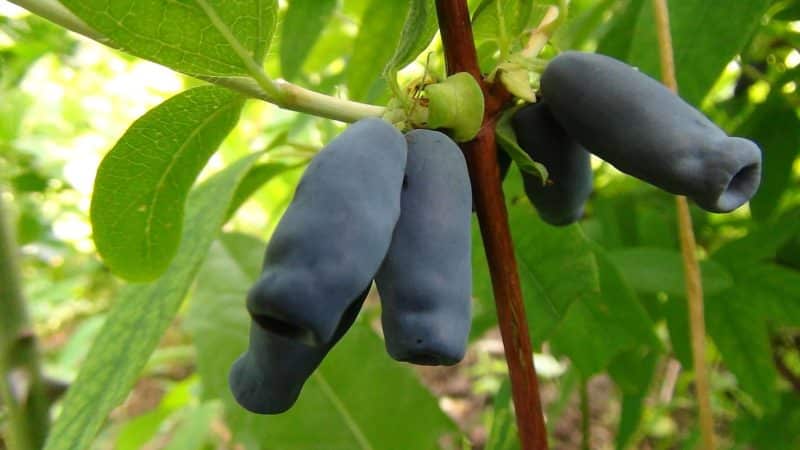
An early-ripening, low-growing variety, the yield can reach up to 5 kg. The berries are medium in size and ripen at the end of June. It is distinguished by the unusual taste of the fruit - sweet, with a strawberry aroma without characteristic bitterness or astringency.
When to plant shrubs
Planting honeysuckle seedlings in the Moscow region in open ground can be produced both in autumn and spring.
It is preferable to do this in the fall, about a month before the onset of stable frosts, when the plant is preparing for a dormant period. If you plant it between late August and mid-September, it will have time to take root and be better prepared for winter.
Planting in spring is possible provided that the seedling is in a cassette where its roots are protected. When planted in the spring with bare roots, the chances of establishment are significantly reduced.
Selecting a location and preparing the soil for growth
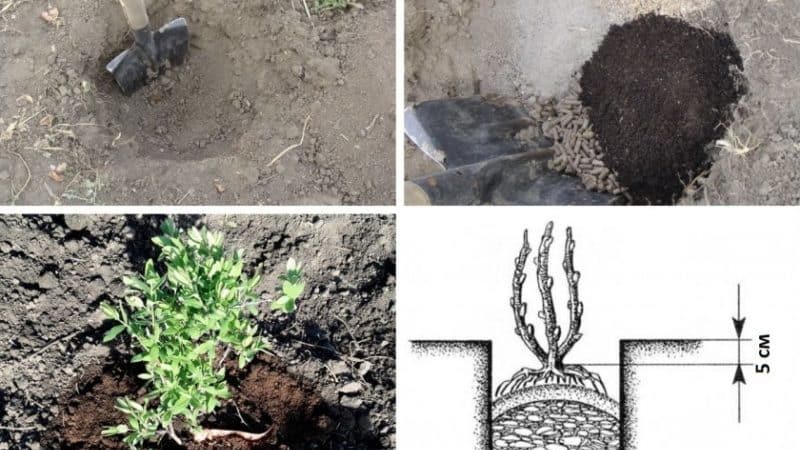
Soil for planting should have a loose structure, fertile, rich in nutrients. Ideally, it will be loamy or sandy loam soil.
A prerequisite for survival and obtaining a large harvest is the correct choice of planting site. It should be:
- open to sunlight;
- protected from cold winds and drafts, so it is better to plant the seedling on the south side of a building or fence;
- with good drainage system and slightly acidic soil, sandy soil, wetlands and lowlands should be avoided;
- with a moderate amount of moisture;
- be at a sufficient distance from other trees and shrubs;
- don't be in the shadows.
How to plant correctly
When planted, the seedling should have a height of 35-40 cm and several branches. It should not have any damage, broken branches or dry places, rot or damage to the roots. It is advisable to purchase planting material from special nurseries.
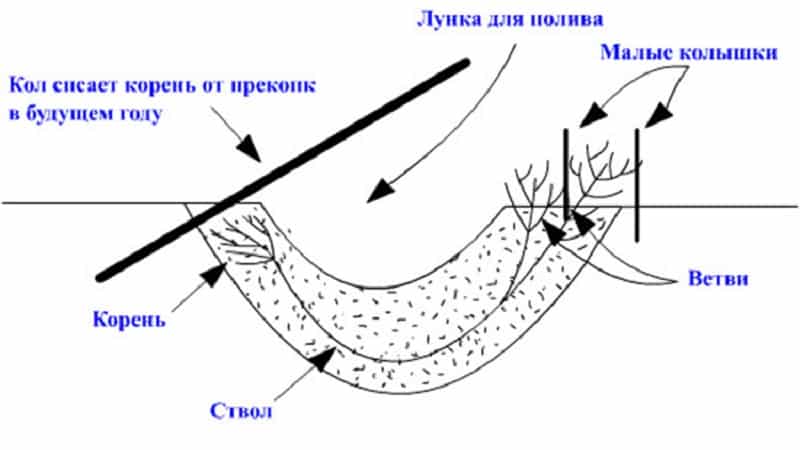
Sequence of actions when landing:
- Dig a hole measuring 50x50x50 cm.
- Place drainage at the bottom with a layer of 10-15 cm.
- Mix the soil from the pit with sand, ash and humus in equal quantities.
- In the prepared hole, build a cone of soil, place the seedling on it, and straighten the roots.
- Cover with soil so that the root collar is 5-7 cm above the surface.
- Place a stake next to the seedling.
- Compact the soil around the bush and form a border at a distance of 30 cm from the root collar.
- Water the soil with a bucket of water and mulch with dry leaves, straw or sawdust.
Place plants at a distance of at least 1-2 m from each other.
How to care for honeysuckle in the Moscow region
Honeysuckle is a very unpretentious plant; caring for it is simple, but requires compliance with a number of basic agrotechnical rules.
Watering and fertilizing
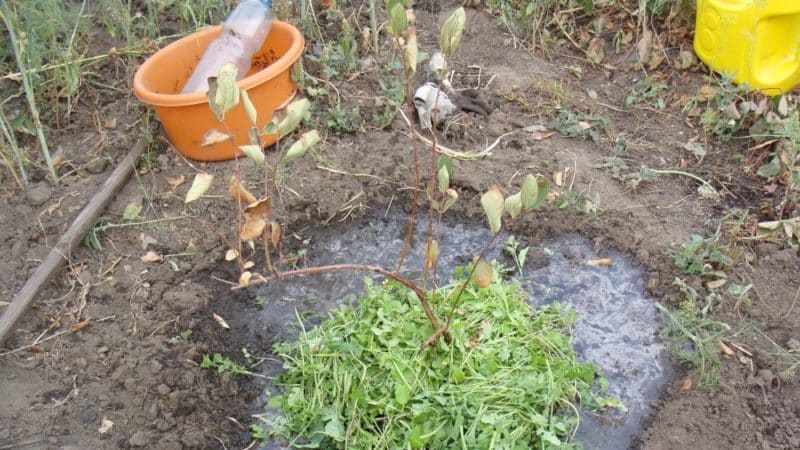
Timely and sufficient watering is very important for this crop. When the soil dries out, the shrub begins to dry out and wither. In a dry year, it needs to be watered daily in a volume of at least 10 liters of water per bush. During the fruiting period, the amount of moisture is doubled.
If there is no severe drought, it is enough to water the honeysuckle 3-4 times per season.After watering, it is recommended to mulch the soil.
Attention! Lack of moisture negatively affects taste. The fruits lose their sweetness, become overly sour, and bitterness appears.
After planting a shrub in open ground, there is no need to fertilize it in the first 2-3 years; it only needs the nutrients placed in the ground during planting.
In the fourth year, a mixture of organic and mineral nutrients is added in the fall. To do this, mix 5 kg of compost with 100 g of wood ash and 40 g of superphosphate. In spring, the bush is fed with urea - 1 tbsp. l. for 10 liters of water.
Attention! Fertilizing with ammonium nitrate is carried out until the buds swell.
Pruning and rejuvenation
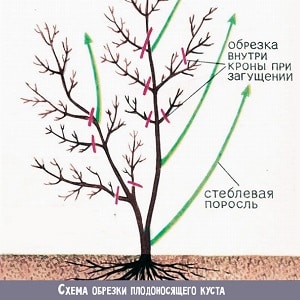
In the first 3-4 years after planting, the young plant is not pruned. Then this procedure is carried out most often in early spring before the process of swelling of the buds begins. Old, broken and dry branches are removed, in the place of which young and strong ones grow.
Upon reaching eight years of age, the bush is pruned every two years. To rejuvenate it, in the middle of the plant, the upper old branches are removed, as well as shoots and branches lying on the surface of the soil.
Important! Trim the plant when there are no leaves at all. In spring - before the buds appear, in autumn - after complete leaf fall.
Prevention and protection from diseases and pests
Honeysuckle is highly resistant to damage by fungi and pests, however, regular preventive inspections of the bush should be carried out in order to timely identify and eliminate problems at the first signs of damage.
If the rules of care are violated, the plant is most often affected by the following diseases:
- Powdery mildew. The disease is promoted by damp, cold weather, insufficient pruning of the plant and, as a result, excessive bush density.
- White spot, or ramulariasis. A fungal disease in which drying spots form on the leaves.
- Cercospora blight. Most often, too dense bushes are affected. The development of the fungus is promoted by high humidity in combination with air temperatures above +25°C. In this case, light brown spots with a red border of 3-4 mm appear on the leaves.
It happens that if not properly cared for, the shrub is attacked by insect pests: honeysuckle aphids, fingerwings, leaf rollers, scale insects and others.
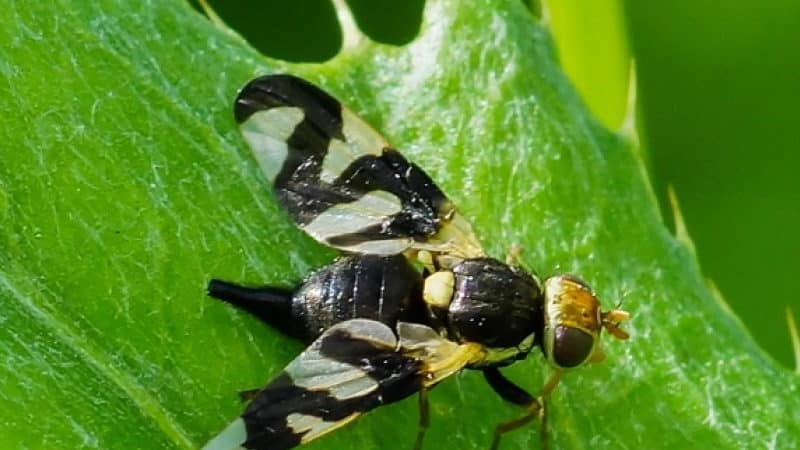
How to treat a bush
To prevent diseases, already when pruning the plant, garden varnish is applied to the cutting sites, which serves as a barrier to the entry of pests and the spread of diseases.
If a plant becomes ill, treatment should be started as soon as possible.
To prevent and treat powdery mildew, treatment is carried out with such drugs as “Topaz”, “Prognoz”, “Fundazol”.
In case of white spotting, the infected parts of the plant are cut off and burned, the bush is treated with Bordeaux mixture or another fungicidal preparation, for example, Mancozeb or copper oxychloride.
To prevent cercospora, the bush is sprayed in early spring with a copper-soap solution, Bordeaux mixture, cuprozan or the fungicidal drug “Fundazol”. In any case, the affected leaves are removed and burned.
When attacked by insects, the bushes are sprayed with insecticides "Aktellik", "Confidor", "Rogor-S" separately or in a mixture according to the instructions.
Attention! To destroy pests and fight diseases, bushes are sprayed only after harvesting.
During the flowering and fruiting period, pests are collected by hand or sprayed with an infusion of tobacco dust. The product is sold in the store. To prepare the solution, 250 g of the mixture is added to 5 liters of water. The solution is mixed well and infused for three minutes. Strain before use.
What birds eat honeysuckle in the Moscow region
Not only harmful insects, but also birds are not averse to eating the first berries. Some summer residents complain about attacks by field thrushes and sparrows. You can protect the ripening crop from feathered thieves using netting and repellents.
Harvesting honeysuckle
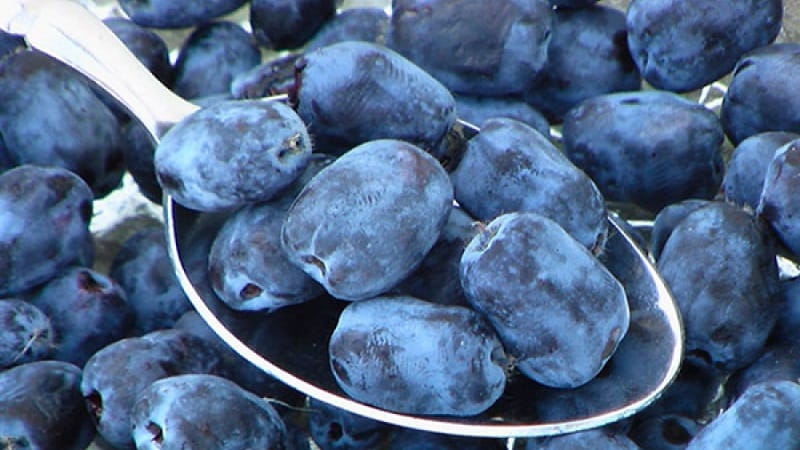
Many gardeners who have planted young honeysuckle on their plot expect the harvest to appear next year. And they are disappointed when this does not happen. But this is completely normal - the shrub begins to bear fruit 2-3 years after planting in open ground.
When does honeysuckle ripen in the Moscow region?
The ripening time of honeysuckle in the Moscow region varies depending on the variety, but on average, harvesting can begin 1-2 weeks earlier than strawberries. In early-ripening varieties this usually occurs in the first half of June, in mid-ripening varieties - in early July. It is easy to determine the degree of ripeness of the fruit - the berries begin to darken first on the upper branches, and then on the lower and middle bushes. The ripening process can take 4-5 weeks, and the fruits will inevitably begin to crumble.
How to collect honeysuckle
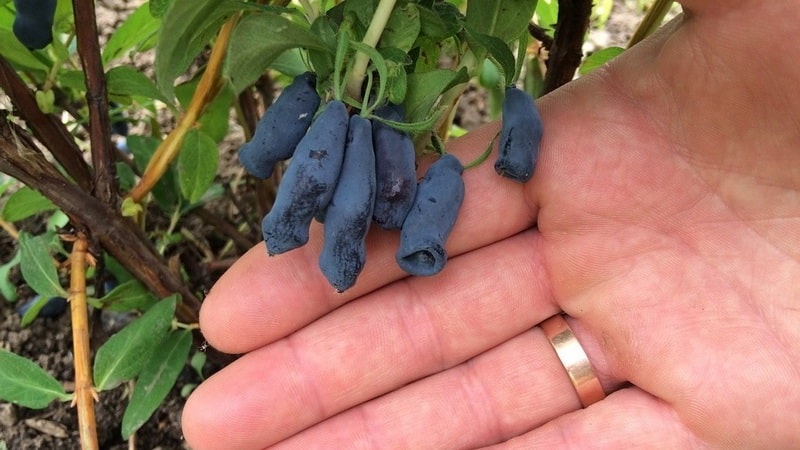
To slow down the shedding process, during the ripening period and before harvesting, the plant is watered more often and more abundantly. EIf this is not done, even unripe fruits will begin to crumble.
Harvest as the berries ripen; you should not hope that they will reach optimal ripeness at the same time. Ripe fruits will simply fall from the bush.
If it is not possible to regularly collect ripe berries, a film is spread under the bush, and the fallen fruits are stored on it without coming into contact with the ground and without being spoiled.
Considering that the skin of the berries is thin and delicate, they do not tolerate transportation well. Therefore, some summer residents begin to harvest about a week before the ripening date. During storage, the berries ripen and acquire a characteristic taste and aroma.
Conclusion
Honeysuckle is one of the most unpretentious plants for cultivation in the Moscow region. Many varieties have been bred with high taste and unprecedented yield. Fruiting occurs from the very beginning of summer and, depending on the variety, almost until autumn.
Resistance to diseases and pests allows you to practically not use pesticides and from the first days of summer you can pick tasty, healthy and environmentally friendly berries.